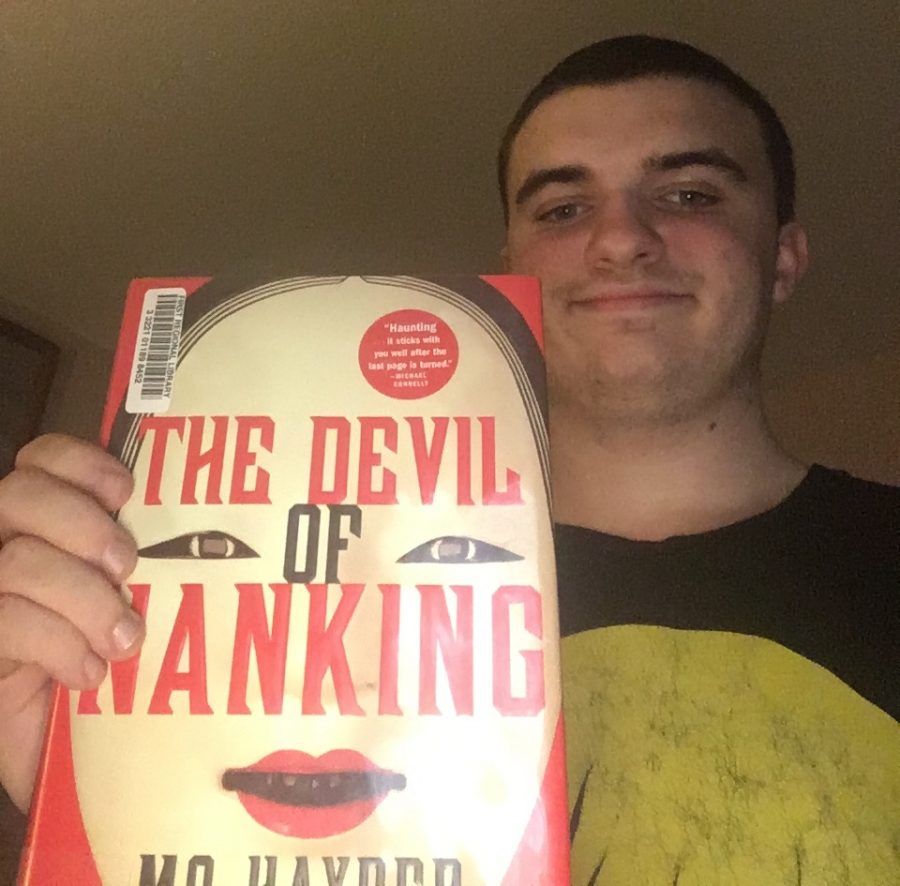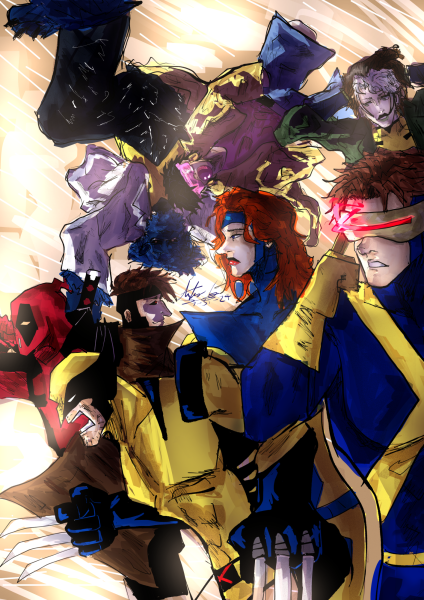Book Review: Mo Hayder’s ‘The Devil of Nanking’
“The Devil of Nanking” is Jake Lankford’s new gold standard for excellence in literature.
How often does a book come along that can be described as nearly perfect? A book whose characters strike a perfect combination of flaws and characterization, a book whose plot chooses to subvert the cliches of its genres, and a book that dares to be different? I have a response to these and many other questions – Mo Hayder’s historical crime thriller “The Devil of Nanking.”
Central to the book’s story is the Nanking Massacre in World War II, more specifically, the characters who are affected by it, past and present.
Set in 1990, the present story follows an Englishwoman known only as “Grey” who is obsessed with the Nanking Massacre after reading about it in one of her parents’ history books while staying at a mental hospital at the tender age of 13. In particular, she is obsessed with finding out about one specific atrocity that happened during the Massacre and whether it actually happened or whether it’s all in her imagination, like how her doctors and nurses often said when she brought it up. When Grey left the hospital, she entered into London University and continued her quest there, only this time, she found a small glimmer of hope in the form of an academic journal that states that there are two films of the Massacre. One film was the real-life film of missionary John Magee, who was in China on a missionary trip and documented the horrors that went down in Nanking, but the other, fictional film was made by Shi Chongming, an elderly Chinese college professor currently living in Japan who survived the Massacre.
This is where the story actually begins. Grey arrives in Japan and tries to convince Shi to let her see the film, but he rebuffs her and sends her right out of his office, right back to square one. Now, lonely and with little money, no hotel and doubting her sanity once more, Grey decides to sleep on a park bench for the night. When she awakens, a man named Jason decides to help her out by offering her a room to rent at his house. He gives Grey his address before leaving her alone on the bench. After this, she propositions Shi once again and is still rebuffed, but is told to come back in a week’s time. Seeing no other option, Grey decides to rent a room from Jason and stay in the decrepit, dilapidated house he and two other women, Svetlana and Irina, call home. That night, Grey is taken to the hostess club where Jason, Svetlana and Irina work and is immediately hired by the owner. This first night is not important, nor is the second night, but the second night is when two of the book’s most important characters are introduced – Fuyuki, the wheelchair-bound, wizened and decrepit yakuza boss, and his nurse, Ogawa, a mysterious woman who waits on him hand and foot and who is revealed to be a brutal serial killer known as the “Beast of Saitama.”
The night that finally gives Grey her chance is when Fuyuki and his entourage arrive at the club and Fuyuki begins to feel sick. Seeing this, a member of the entourage goes to the nurse and Grey watches as the nurse fills a glass with water and sprinkles a mysterious, nutmeg-esque powder into Fuyuki’s glass. After Fuyuki drinks this, he feels fine, but this whole scene isn’t lost on Grey.
The day after this bizarre scene, Shi comes over to the house asking to see Grey. The two then head out into the garden where Shi finally tells the truth. He had lied about why he had wanted to go to Japan. Todai University, the college he works for, believes he is there researching what Chinese customs the Japanese Army may have brought back with them, but in reality, he is searching for the ingredients of a supposed miracle tonic that can cure any illness or malady. After this revelation, Shi reveals that the film Grey is after is very much real and he will let her view it on one condition – if she can get the mysterious brown medicine from Fuyuki and bring it to him.
Grey’s story isn’t the only one explored, though. The novel actually shifts back and forth from her story to Shi’s diary entries from 1937 in Nanking as he and his wife, Shujin, are, at first, living peacefully until the horrific events begin and both are forced out of their home and right into the crossfire. With Shujin pregnant, food incredibly scarce, and the Japanese Army slaughtering their way through the city, it becomes especially important that both escape with their lives. This is where I have to stop giving away the plot, though, because anything else would spoil this well-crafted, haunting, poetic, tense and dark narrative.
What is there to criticize about “The Devil of Nanking,” though? This is a book that is so almost perfect, any sort of criticism would be incredibly nitpicky. The plot has incredibly consistent pacing all throughout. It doesn’t just race by and cause you to miss important details, nor does it crawl along at a snail’s pace and force you to skim passages. It strikes a balance between taut, gritty crime thriller and brutal, introspective historical fiction. You will hang on the edge of your seat at certain chapters, yet you will want to savor others and it all comes crashing together in one of the best plot twists I have ever read in fiction. Yes, dare I say it. This is a plot twist that tops “Fight Club.” It is so perfectly placed that not only does it put the events in a new context, it changes everything in the book. A second reading of “The Devil of Nanking” will be drastically different from the first.
This nicely paced plot is served through some of the finest prose I have ever read in fiction. Hayder is able to strike a perfect balance between the tense, gritty style of a crime thriller and the poetic beauty of historical fiction. Every sentence jumps off of the page and will linger with you long after you turn the last page.
The characters are another point of praise. All of them feel incredibly fleshed out and real. Grey is one of the most complex characters I’ve ever read in literature. She is trying to find the truth, yet she finds out so much about herself in the process. Shi also deserves immense praise for his characterization. A scarred, elderly survivor who finds something promising in Grey, Shi is initially very wary and bitter towards her. Shi and Grey fit together so incredibly well that it’s hard not to take notice. Even the extra characters and villains are fleshed out, which is something I want to see more of in fiction.
Finally, I must give immense praise to Hayder for treating the subject matter with the seriousness it deserves. She doesn’t treat the atrocities that happened in Nanking like shock value, a cheap plot device or anything similar. Sure, it’s an integral part of the plot, but Hayder never gets distasteful at all during the chapters in which Nanking is talked about.
In short, this is my new gold standard for excellence in literature. Not just historical fiction or crime thriller, but in all forms of fiction. It is an incredibly underappreciated classic from 2004 that deserves a spot the bookshelves of crime fans, history buffs and anyone who can read.
IN SHORT
Plot: 10/10
Characters: 9.5/10
Prose: 9/10
Themes: 10/10

Morgan "Jake" Lankford
Staff/Reporter, The Pony Express.
Morgan "Jake" Lankford was a staff reporter for The Pony Express.





